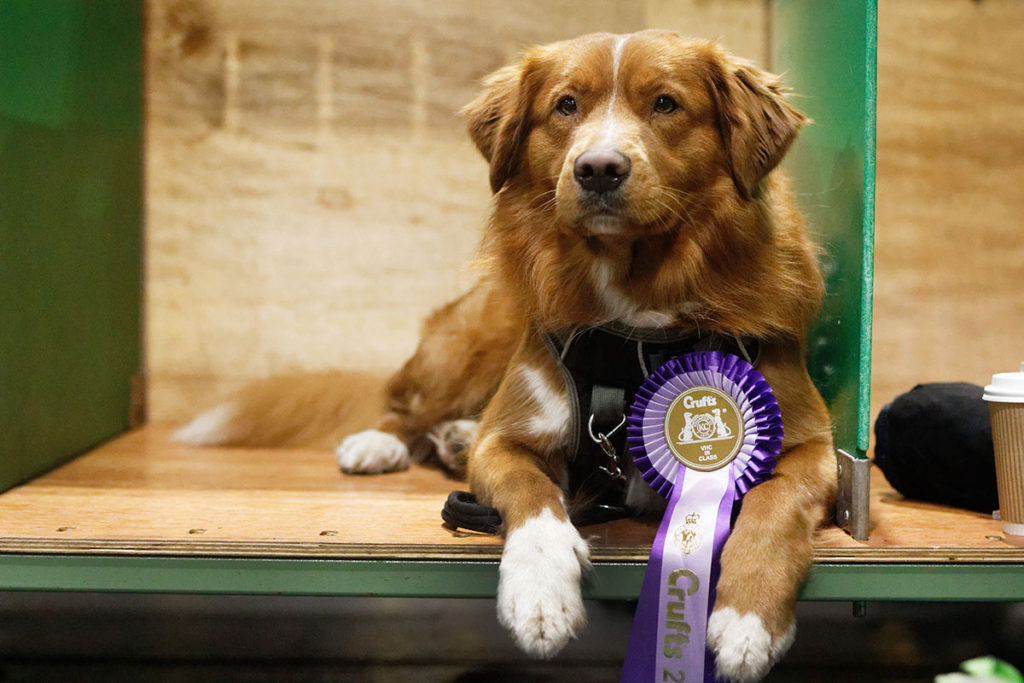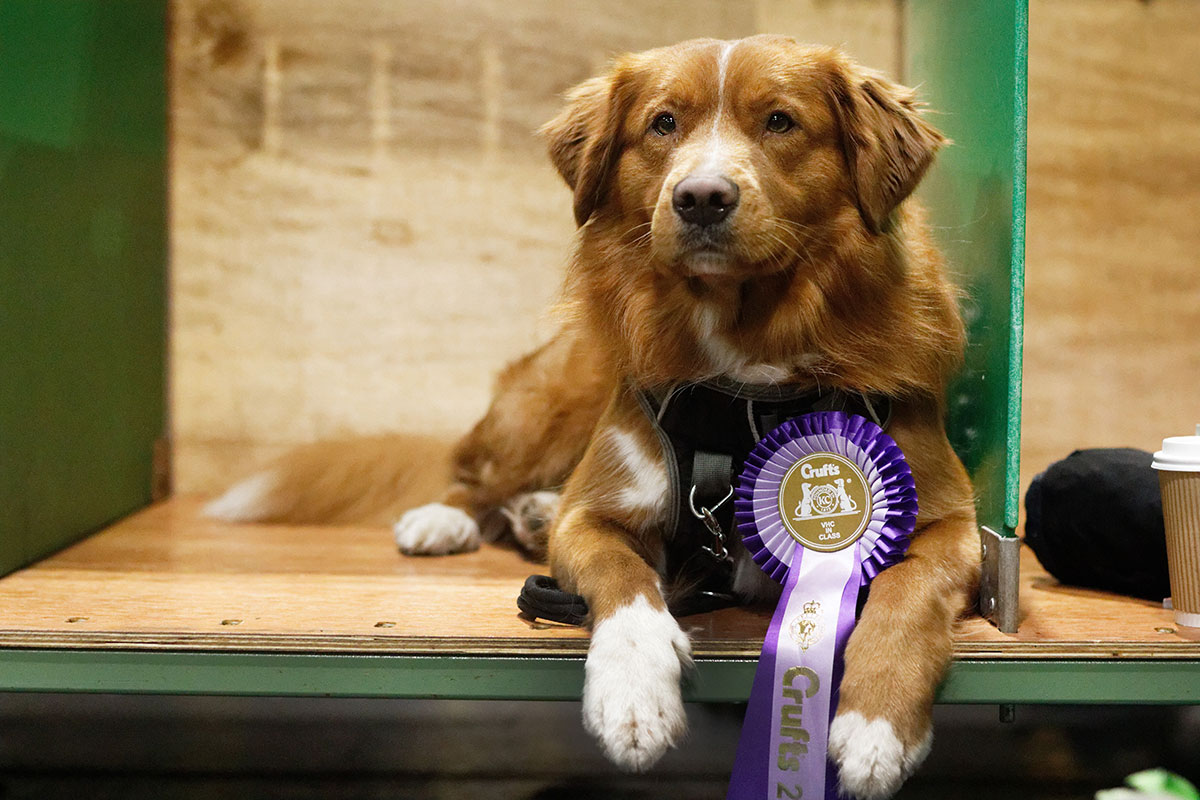[et_pb_section bb_built=”1″ inner_width=”90%” inner_max_width=”1086px”][et_pb_row][et_pb_column type=”3_4″ custom_padding__hover=”|||” custom_padding=”|||”][et_pb_text admin_label=”Journalist Story” _builder_version=”3.17.6″]

Surprise surprise, I’m going to talk about dogs for this month’s article too…
I recently went to show my dog at Crufts. He did really well, and didn’t make a fool of himself – so it was a very good day!
We had a brilliant day: showing, visiting the shops, meeting other dogs, taking photos, and more. I was really impressed with the gundog displays actually, the BASC stand was really great; and I came across many people who were really curious about my breed (the Nova Scotia duck tolling retriever), many of whom were interested in working with them. I was also able to continue my favourite exercise – spotting rare breeds!
I’ve been talking to many people over the last few months who don’t like the idea of showing their dogs, and lots who hate the idea of working dogs. Having done a reasonable amount of both, I thought it might be worth straightening it out! Intelligent, energetic dogs need many things to keep them occupied. So, during the season, Buddy is often my peg companion; he also loves to come and watch us fish in the summer. However, when I can, I show him, and we both love it as well.
I know that showing is often a glorified beauty pageant, and many breeds are so inbred and exaggerated that there is welfare at stake, however, if we combine both disciplines (showing and working), arguably nobody loses.
If you showed your working dog, you could be reassured that the structure of your dog is fitting for their job – in its essence, showing is proving that your dog is a recognisable member of the breed, and doesn’t have any flaws that inhibit movement and working stamina. Therefore, the show dogs would benefit too – having more working animals being shown, judges would begin to see the type of dogs that actually do the work they were bred for.
I’m not saying that it solves all of the problems within either community, and some of them are really huge. However, I thought I’d share my experience, because I have seen (and really enjoyed) both sides with my dog. I really believe that if everyone is open to events like Crufts, we will all benefit.
[/et_pb_text][/et_pb_column][et_pb_column type=”1_4″ custom_padding__hover=”|||” custom_padding=”|||”][et_pb_sidebar _builder_version=”3.17.6″ area=”et_pb_widget_area_19″ orientation=”right” /][/et_pb_column][/et_pb_row][et_pb_row][et_pb_column type=”4_4″ custom_padding__hover=”|||” custom_padding=”|||”][et_pb_team_member admin_label=”YS-Journalist Flora WIlson Bio” _builder_version=”3.17.6″ name=”Flora Wilson” position=”Young Shot Journalist” image_url=”https://0ld.basc.org.uk/wp-content/uploads/2018/11/flora-wilson.jpg” custom_css_member_image=”width: 200px;” module_class=”ys-journalists-bio” custom_css_main_element=”border-top: 2px solid #078463;||border-bottom: 2px solid #078463;||border-right: 0px solid transparent; ” saved_tabs=”all”]
I’m a 16-year-old from the South West of England. Besides shooting, fishing and hunting, I enjoy photography (I run a pet photography business at the weekends) and reading. I have three younger siblings and live on a smallholding at the moment. When I’m not away at boarding school, I enjoy the countryside and spending time with my family. At the moment, I’m preparing for my GCSEs – my favourite are ancient languages and writing-based subjects.
The first article I wrote for BASC is about gundogs. The decline of certain breeds is something close to my heart, as I own two dogs, one a rare gundog breed. Through my photography and dog showing I have come across many vulnerable breeds. It’s so easy to go for the easy option instead of helping to save a breed that does the job just as well. I hope I will able to do something about it.
[/et_pb_team_member][/et_pb_column][/et_pb_row][/et_pb_section]
